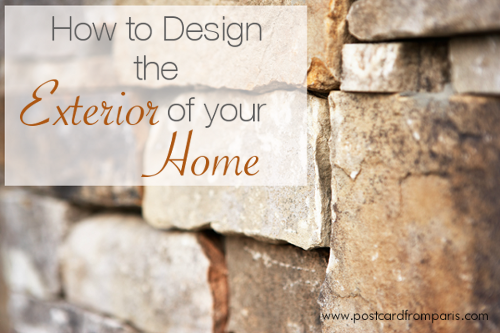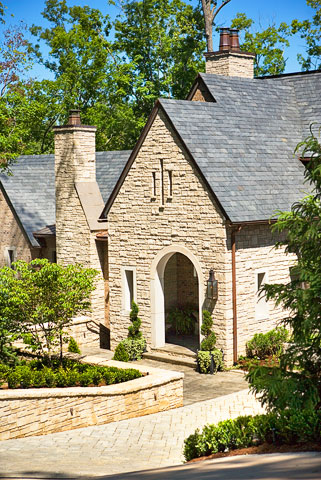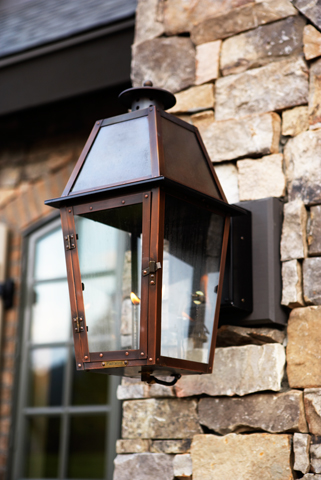We talk a lot about designing the interior of your home. But we cannoot overlook the exterior - spending time on the exterior finishes and elements are a crucial part of making the overall design vision of your home come together.

When it comes to designing the exterior of your home, there are many elements to consider, including materials, finishes, and lighting. We're breaking down each of these and providing some guidance on how to make the best decisions for your home.
Materials
1. Consider your home's curb appeal when making decisions. Curb appeal takes into account your neighborhood and surrounding area. You want your house to stand out, but if you aren't careful, it can stand out in all the wrong ways. For example, choosing a traditional red brick for a home in a neighborhood with natural, Tuscan influences doesn't fit the surroundings and may hurt you when it comes to re-sale.

2. Using the correct materials to bring out certain architectural details is essential. Covering your entire home in stone would overwhelm special details or mute angles. It's possible that a combination of materials would better highlight the important design elements. However, don't get carried away. Too many materials could be confusing and your eye won't know what to look at. As a general rule of thumb, stick to two to three different material elements and keep the color harmonious so there isn't too much contrast.
Color
1. The style of your home should greatly influence your color choices. While more traditional homes rely on contrast to highlight their beauty, craftsman style homes tend to be more monochromatic and warm. Color schemes are there for a reason, and straying too far from these may not do your home justice.

2. Focus on the architectural details of your home when it comes to color. Just as with the interior, contrasting your trim and your wall colors highlights the angles and beautiful lines of your home. Lighter trim opens up and heightens your home, tends to make it seem airier, etc. while darker trim will warm up your exterior, making the home cozier.
Lighting
Lighting can make or break your exterior. The most beautiful home on the block can be unimpressive if not properly lit.
1. Be careful when choosing bulbs for your exterior fixtures. There is really no need to use more than 60-75 watt bulbs in outdoor fixtures. Many lights have a larger max wattage, but that doesn't mean you have to use that. More than 75 watts can cause glare, black out your view of the stars at night, and possibly outshine your home.

2. Be considerate of lighting placement. It's important to light for safety, so be sure to light your doors and walkways. Beyond that, lighting your trees and landscaping can add depth to your property, and uplighting key architectural elements means passers-by can appreciate your beautiful home no matter the time of day.
For additional considerations when it comes to designing the exterior of your home, download these tips from our design team.
Photos by: Rachael Boling

